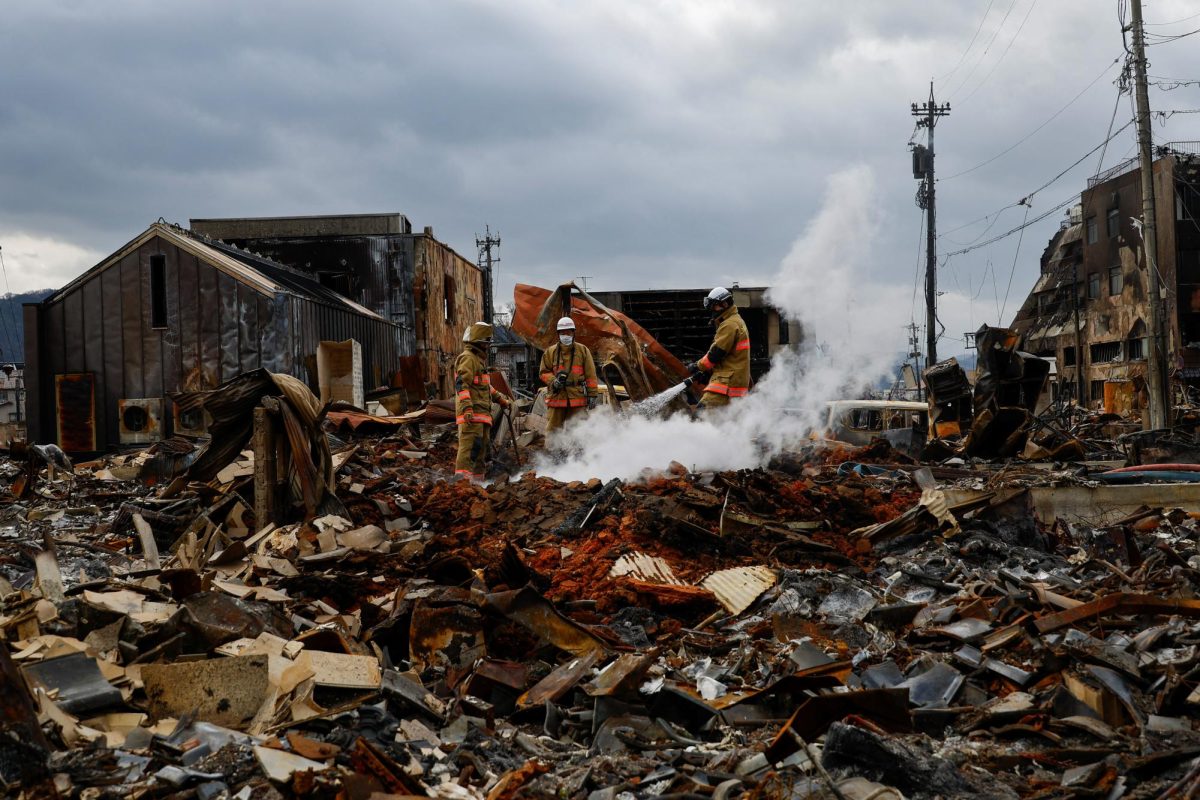At the start of the New Year, unfortunately, a 7.6 magnitude earthquake has devastated Japan. Center of Disaster Philanthropy (CDP) reports that there have been 222 casualties and 22 missing people. Moreover, there were reportedly 1,200 injuries across the prefecture. The earthquake also spurred fires and landslides to spread, and multiple aftershocks were also recorded after the quake off of the coast of the Noto Peninsula by the Japanese Meteorological Agency. Many homes and buildings located in Suzu, Ishikawa Prefecture of Japan have been reduced to rubble. Even now, relief efforts are still ongoing to aid civilians who have been severely impacted by this powerful quake.
The damage caused by the earthquake has proven to be extremely extensive– Wajima City homes, buildings, and businesses have been reduced to rubble. The BBC reports, “A fire broke out when the New Year’s Day earthquake hit, and spread instantly, incinerating the wooden stalls and some surrounding homes.” The BBC also adds that, “Throughout the town, people’s traditional wooden homes lie splintered on the ground, collapsed; not made to withstand Japan’s endless earthquakes.”
Many of those affected by the earthquake describe how terrifying it was. In an interview with CNN, Kouki Takahashi, 28, says how this earthquake was the worst one he has felt. “I have experienced massive earthquakes before, but this one felt worse.” He also adds how this earthquake brought back memories to the devastating 2011 Tōhoku 9.0 magnitude earthquake: “It was a similar earthquake where it started from light shaking that gradually got more intense.” Takahashi added how he was at home and taking a shower when the earthquake struck, “I was literally naked, just grabbed my clothes, went outside and just ran to my car.” Takahashi also adds that he spent the night of the earthquake sleeping in his car, believing that it was the safest place to be given the frequent aftershocks that would occur. Throughout the night, he heard the relieving sound of frequent military helicopters and vehicles passing by.
The earthquake also spurred a tsunami warning, ordering the evacuation of over 62,000 people, as per the fire and disaster management agency.
NHK World Japan also added Shinkansen (bullet train) services in eastern and central parts of Japan following the earthquake. More than 1,400 passengers were stranded between four stalled trains between Kanazawa and Toyama for around 11 hours. NHK also reports that 1,000 others were stranded for nearly a day in local express trains. Moreover, 500 people were stranded at Noto’s airport, as per France 24.
Thousands of survivors of the quake have also relocated to shelters, where relief is limited. CNN reports,“Other than a roof, there’s little else available; there was no heating… people slept on mats on the floor with thick blankets, wearing their coats, hats and gloves to stay warm in the 4 degrees Celsius (40 degrees Fahrenheit) nighttime temperatures.” CNN also adds that there was also no running water available, therefore many people had to stand in line to receive water from the Japan Self-Defense Forces.
NHK also reports that Officials from the Japan Ministry of Agriculture have sent “240,000 meals with bread, rice and instant noodles, as well as 500 packages of powdered milk by Wednesday, at the request of Ishikawa Prefecture.” The Officials also continued stating they have also shipped 190,000 bottles of water.
The Japanese Red Cross also provided aid, stating, “16,005 blankets, 5,230 sleep comfort kits, 3,400 portable toilets, 2,224 family emergency sets, 500 towels, 500 stockings, 50 cassette stoves, and other relief items were distributed to the affected people. 40 partitions were also delivered to keep privacy in the evacuation centers.”
The earthquake is an unfortunate but not uncommon phenomenon in the notoriously disaster-prone country. Japan is situated atop a fault line that runs throughout the Pacific, and several large earthquakes and tsunamis have devastated parts of the country in the past. Nevertheless, one can only hope that the disaster-preparedness of Japan’s institutions and its people will carry them through this hardship as it has for them many times before.







